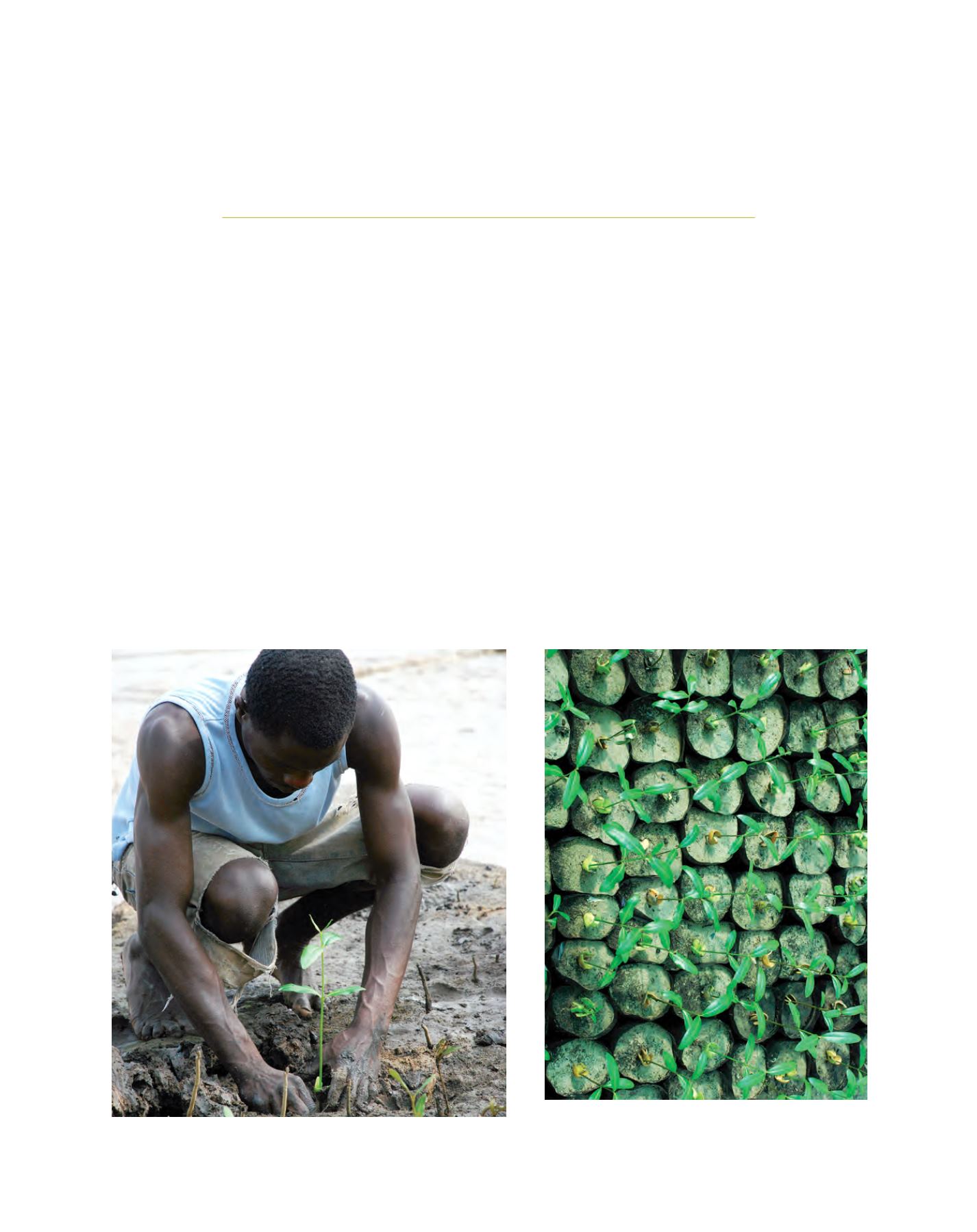

[
] 256
Restoring and managing
forest landscapes for better lives
Stephen Kelleher, Deputy Head, Forest Conservation Programme, International Union for Conservation of Nature
W
e can now begin to look back upon the International
Year of Forests, 2011 (Forests 2011). Throughout
the year, we witnessed an unprecedented level of
attention placed on the world’s forests and the challenges and
opportunities that confront them. Along with its partners, the
International Union for Conservation of Nature (IUCN) took
advantage of this unique focus on forests to amplify and build
on our work and progress.
Forests 2011 commenced with a dynamic meeting of the UN Forum
on Forests in New York, where our team was joined by the IUCN
Director General to highlight some of IUCN’s significant contribu-
tions to sustainable forest management and forest-based livelihoods
around the world.
At this event, the Rwandan Government committed to border-
to-border restoration of its natural ecosystems, upon which a vast
majority of its population already depends for liveli-
hoods. This bold step has served as a catalyst for other
Governments to adopt a similar scale of ambition.
Along with the Government of Rwanda and the United
Nations Forum on Forests, IUCN was a major partner
in supporting Rwanda’s Forest Landscape Restoration
Initiative.
Significant outcomes
At the time of Rwanda’s announcement, IUCN
predicted that Rwanda’s commitment might mark the
beginning of the largest restoration initiative the world
has ever seen – and it is beginning to look as though
we were right. In September we co-hosted, along with
the German Government, a high-level meeting of
ministers and executives of major organizations and
Harvesting seedlings for Mangrove restoration, Limpopo River, Mozambique
Mangrove seedlings in a tree nursery, at the mouth of the Limpopo,
Mozambique
Image: IUCN/Daniel Shaw
Image: IUCN/Daniel Shaw
















